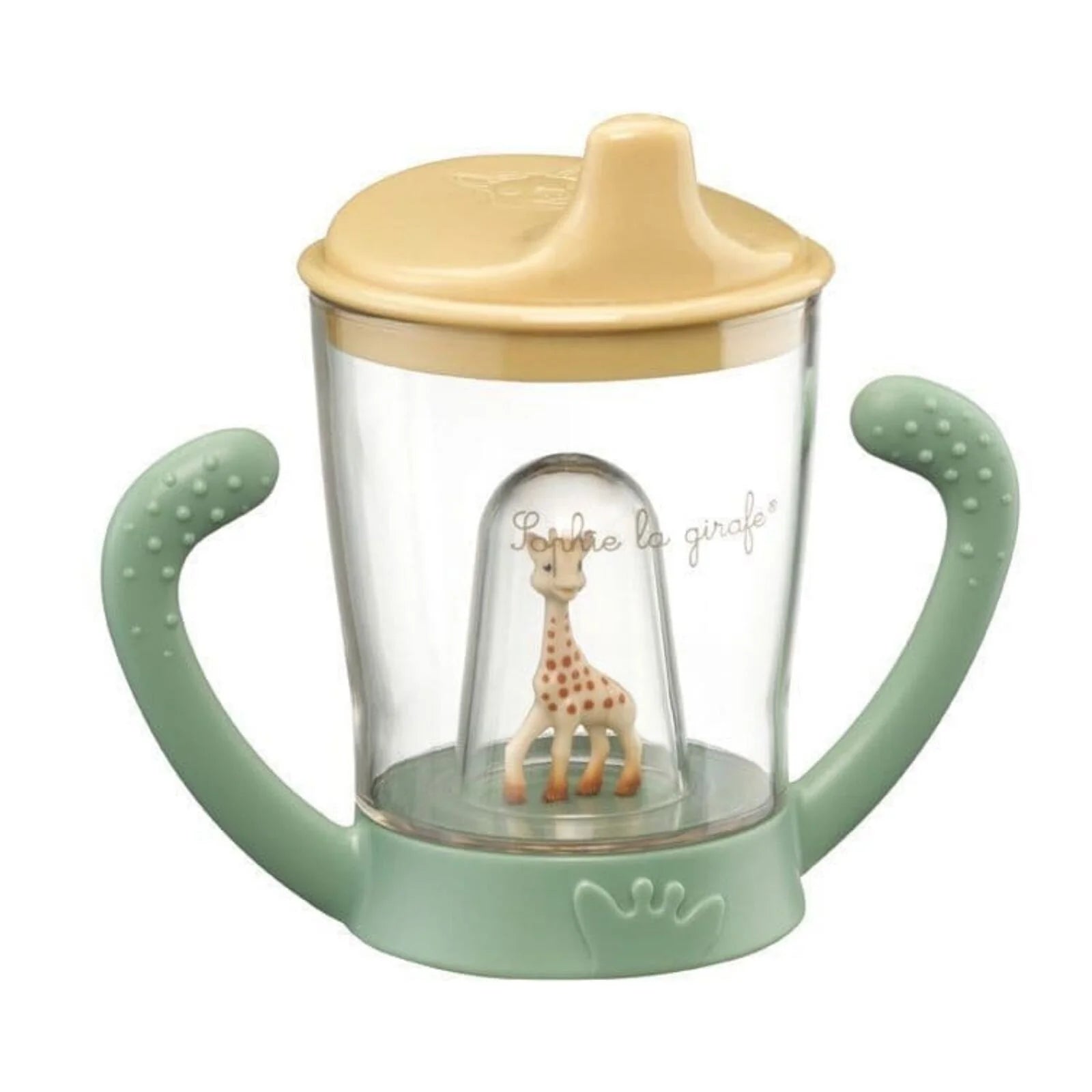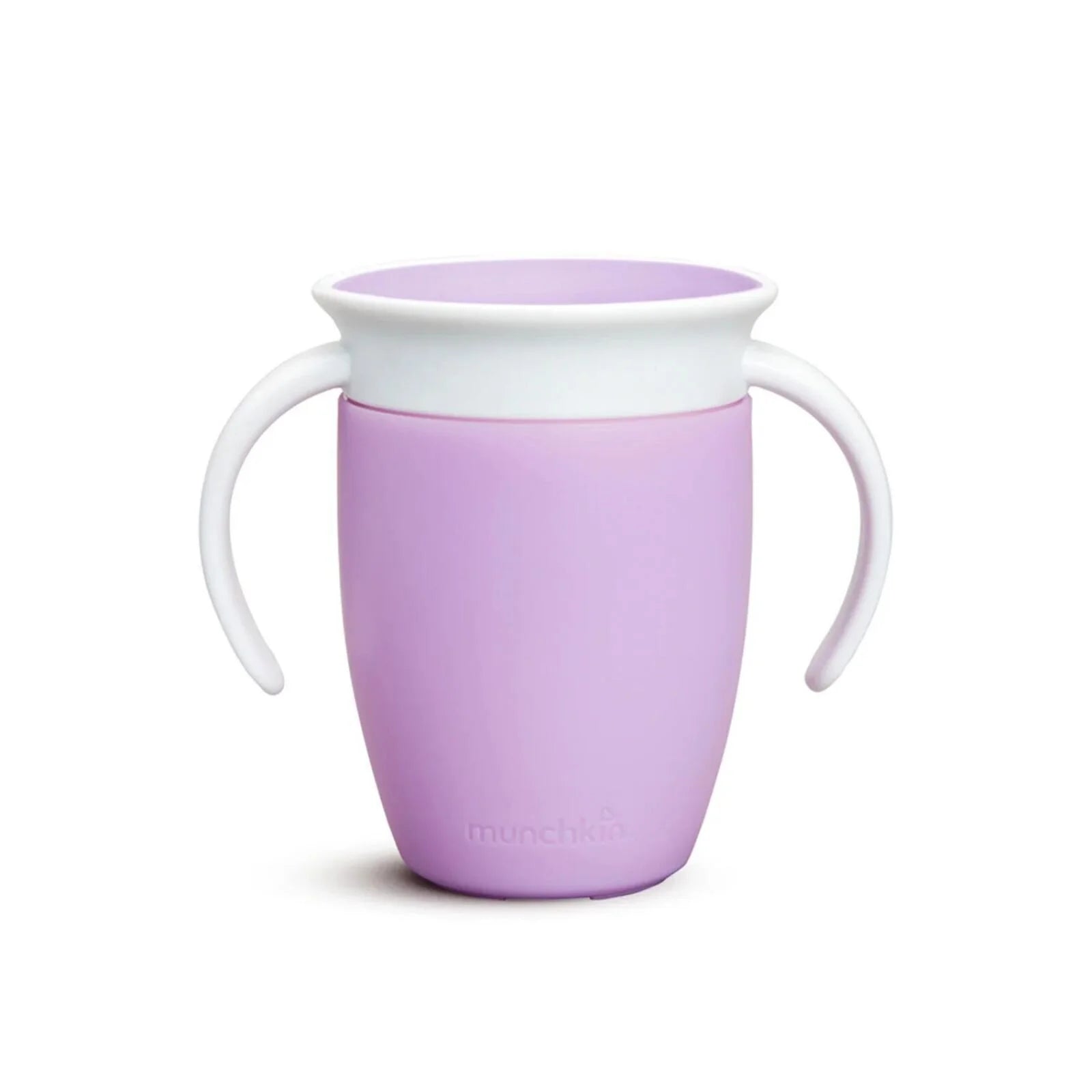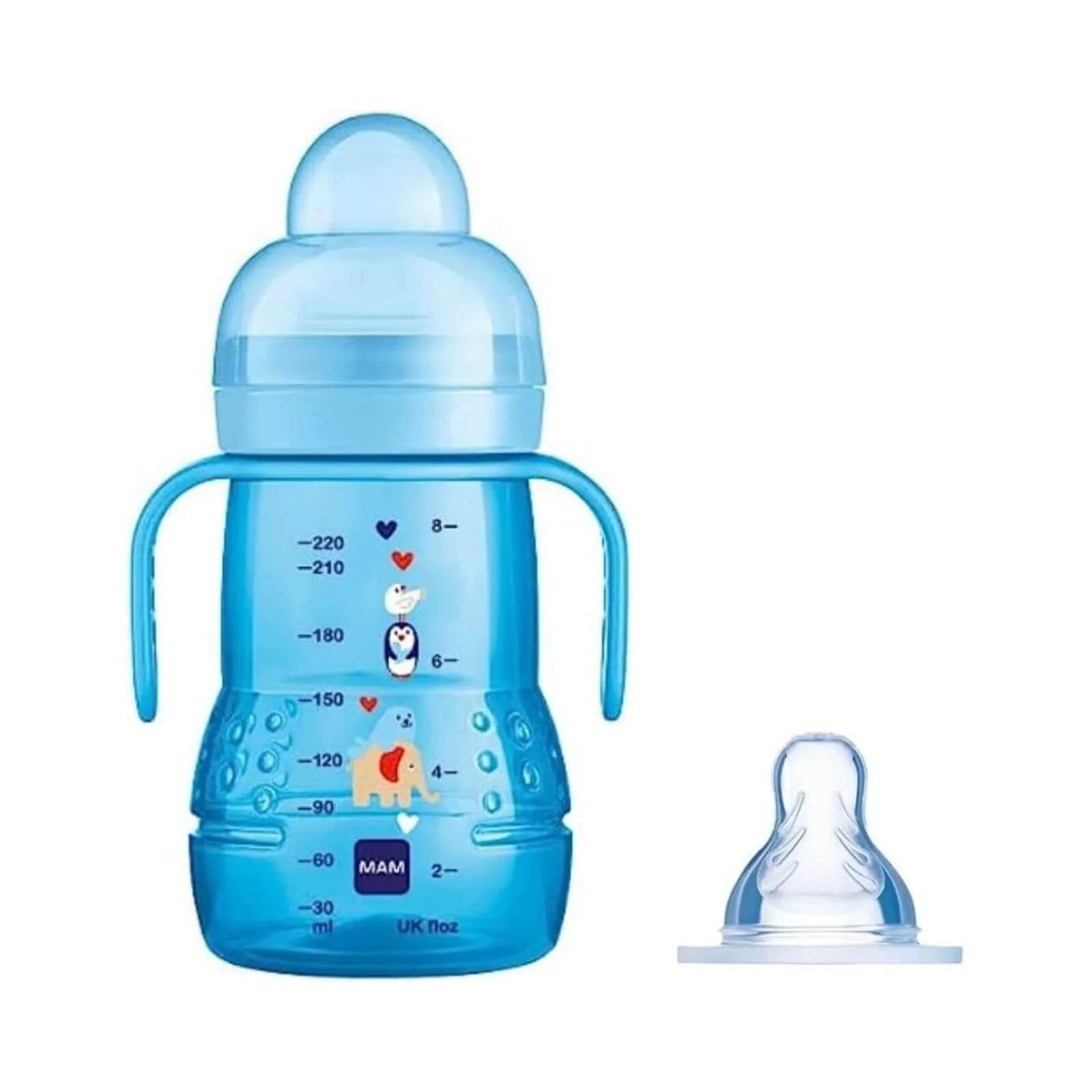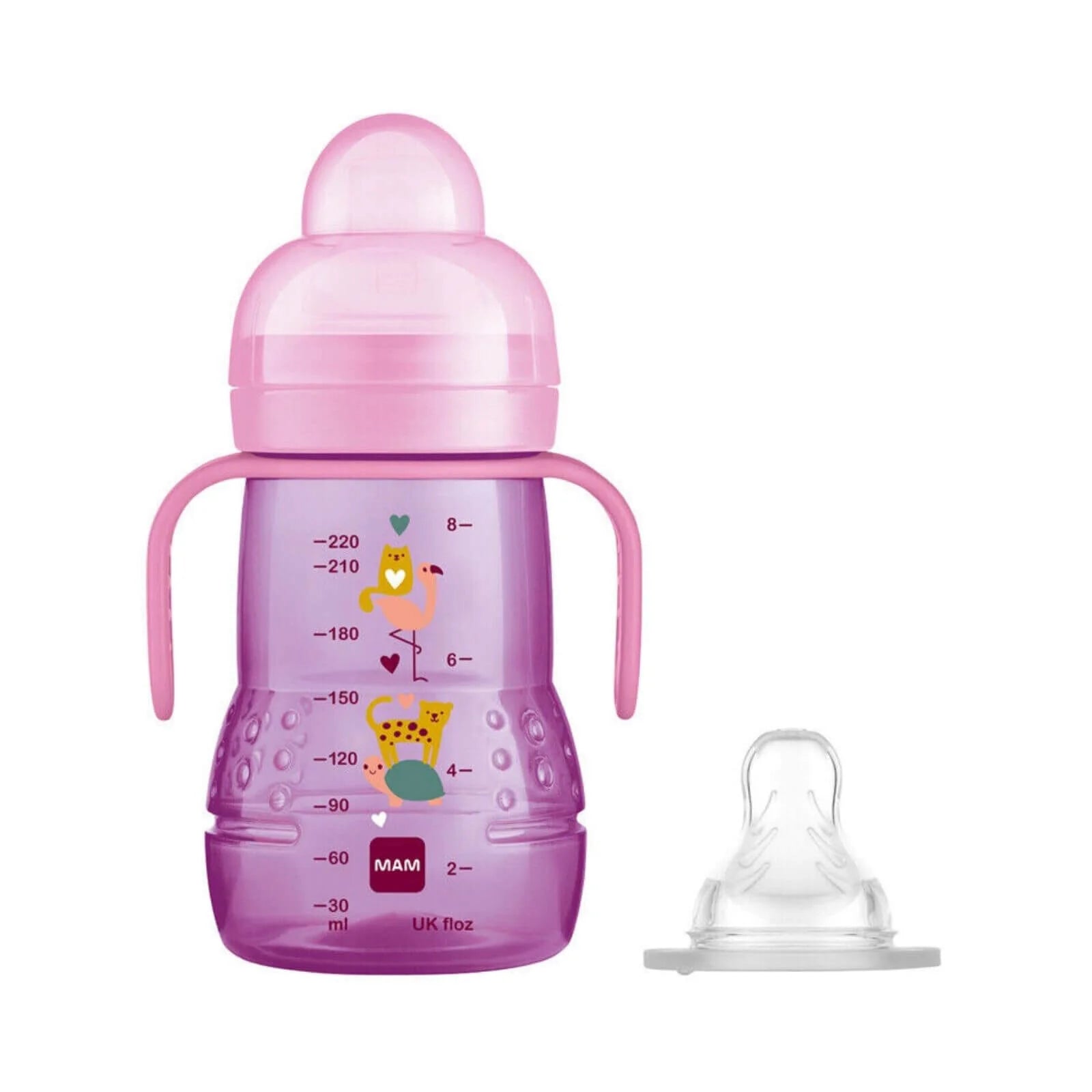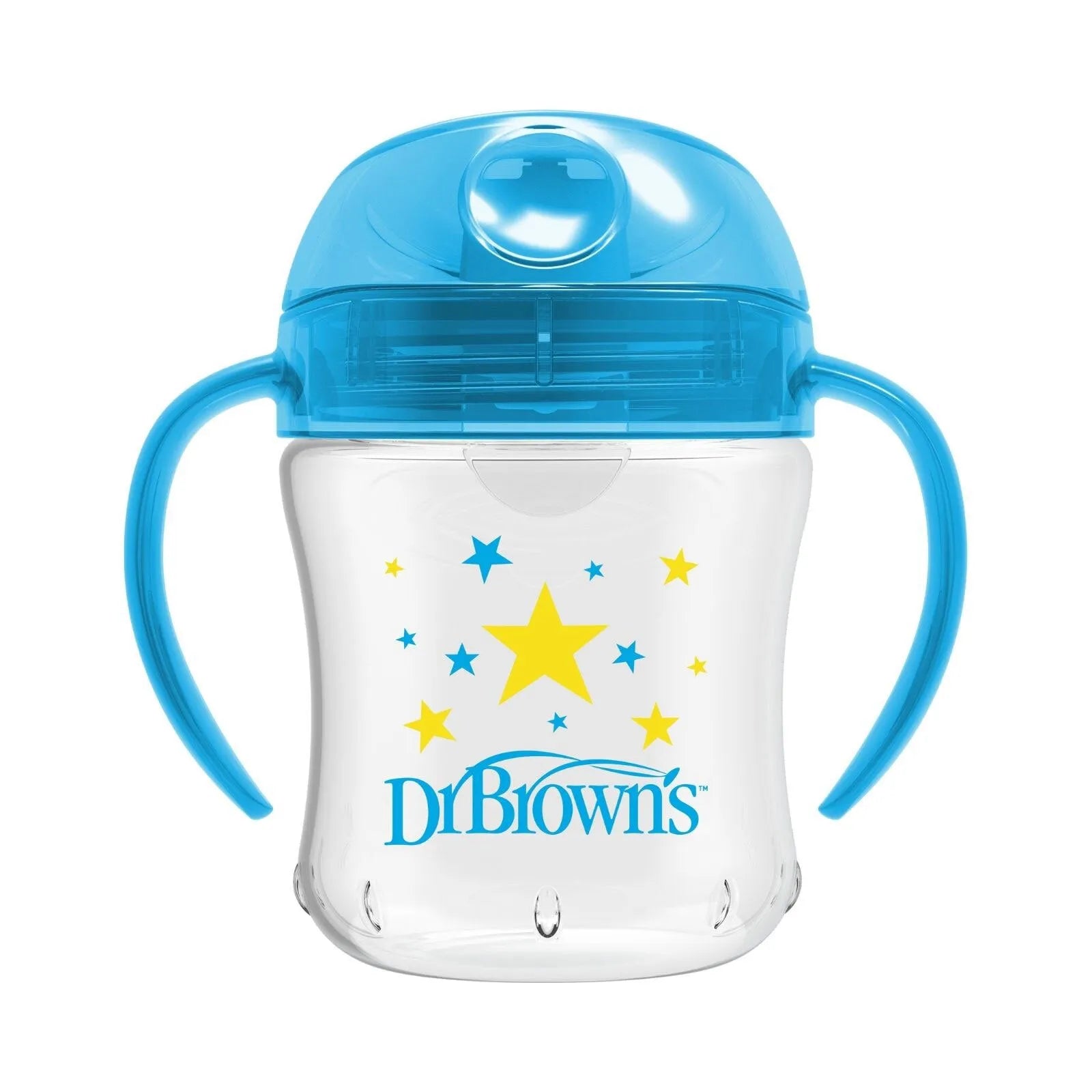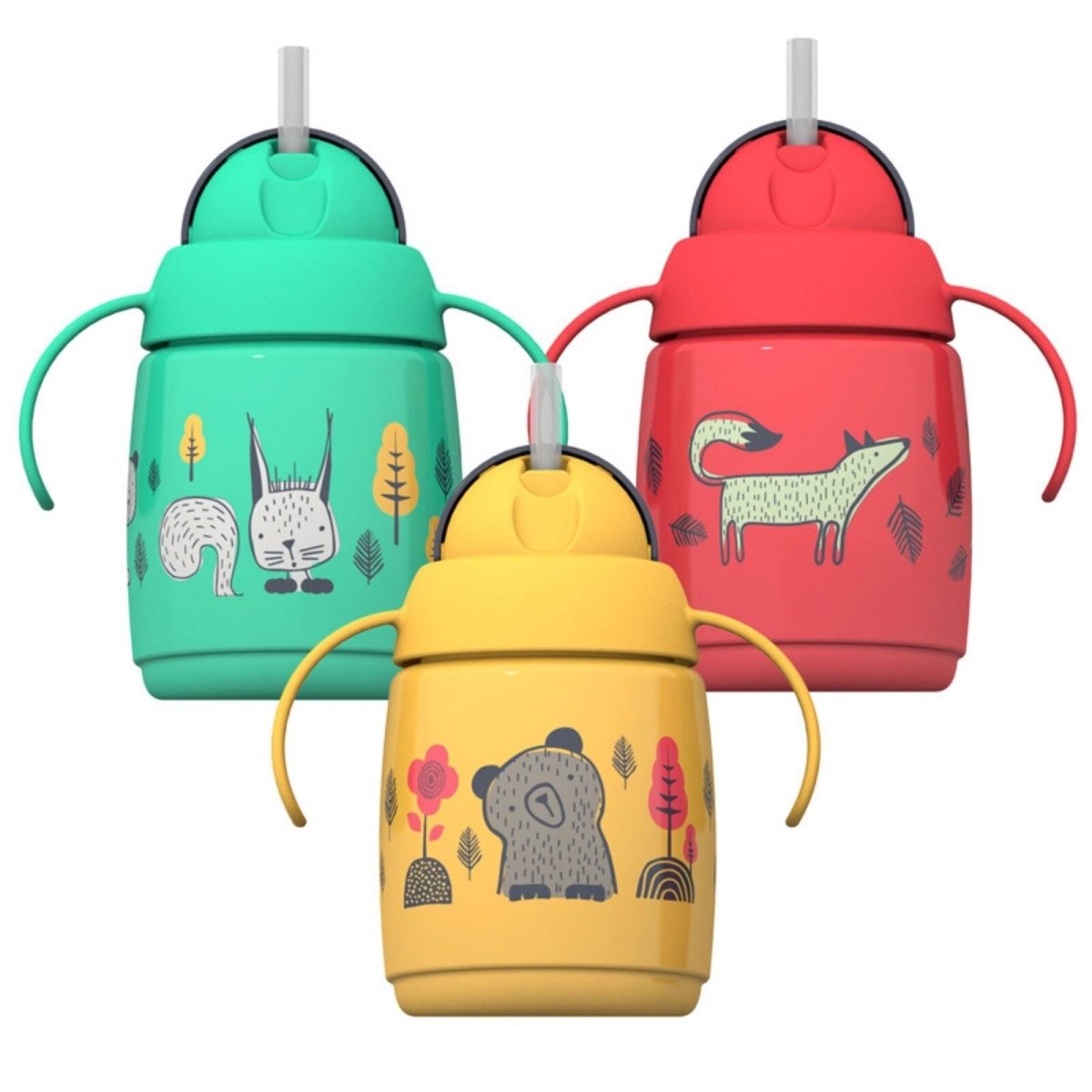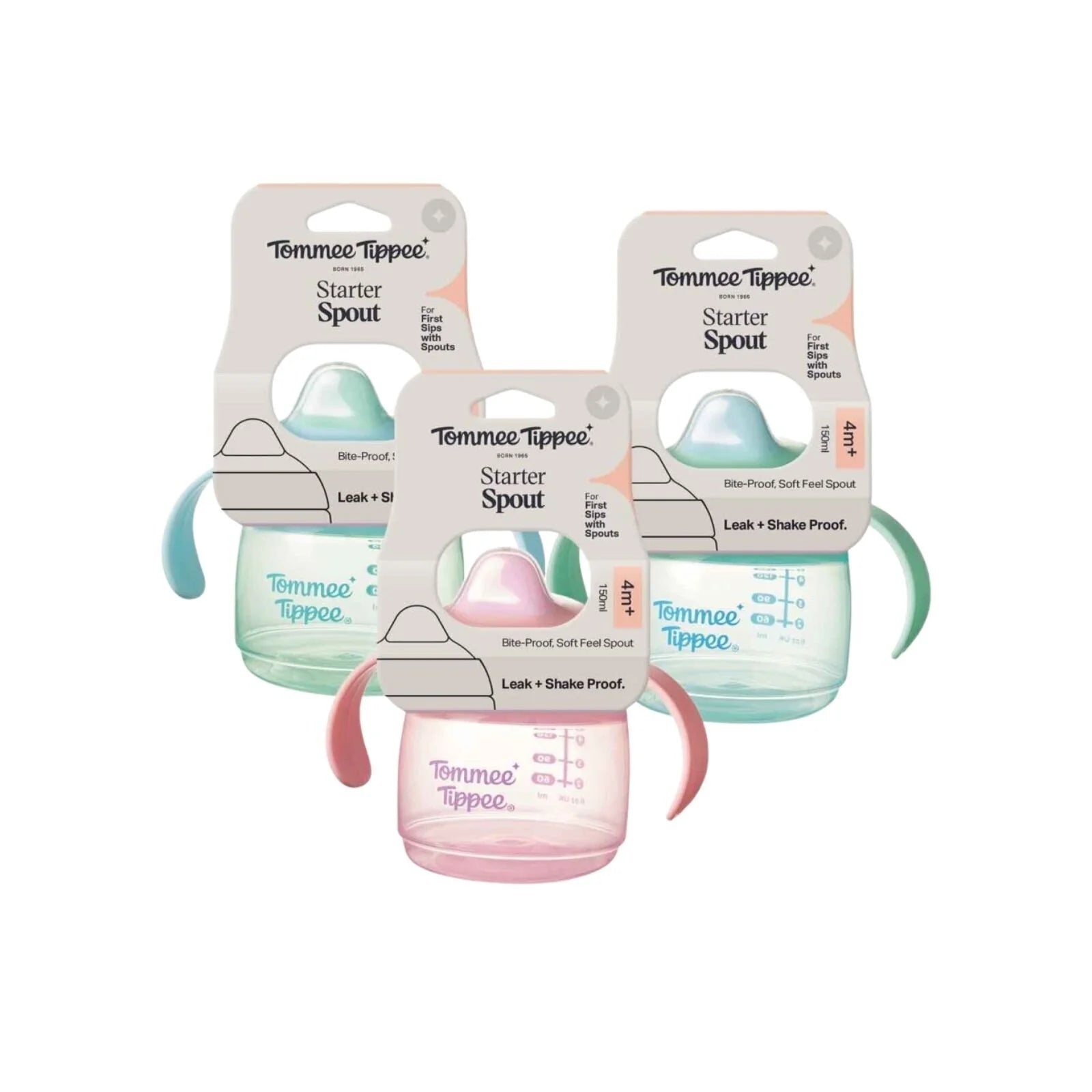Cups for Babies, Kids, and Toddlers
Selecting the correct cup for your child's developmental level will help to make meals more fun. From toddler and straw cups to baby cups and sippy cups, there are lots of choices to suit your child's tastes and develop independent drinking abilities.
Consider your child's comfort and any sensory needs when choosing a cup. Some kids find drinking more enjoyable when they have specific form, colour, or character print cups. Choose also dishwasher-safe cups or ones with detachable components for simple washing. Including your child's preferences can help you to choose a cup that not only improves their mealtime experience but also helps them to acquire necessary drinking techniques.
Baby Cups
Often called baby sippy cups or baby straw cups, baby cups help your child move from bottle or nursing to autonomous sipping. Many of these cups include soft silicone spouts that are mild on sensitive gums, so encouraging appropriate oral growth. Popular for their smooth texture, durability, and safety—often BPA-free—silicone baby cups are the perfect first cup for a newborn.
Kids’ Cups
Your child's needs change with their development, as does the characteristics of their cup. Usually larger and with designs encouraging growing motor abilities, children's cups. Children moving from sippy cups to regular cups would benefit much from handles, which provide a safe grasp and encourage autonomous drinking. Search for a cup appropriate for your child's developmental level to support appropriate drinking behaviour.
Toddler Cups
Toddler cups are designed to promote self-feeding and independent drinking. Many are spill-proof, with lids or valves that prevent accidents. Cups combining straws and handles work exceptionally well for toddlers, as straw cups encourage oral development, while handles provide support and grip. A toddler straw cup can make sipping easy and enjoyable while helping develop their coordination and control.
Trainer Cups
Trainer cups help your child practise drinking from a regular cup. With a rim similar to an adult’s, these cups provide a smooth transition from sippy cups to open cups, encouraging confidence and independence. Many trainer cups have removable, spill-proof lids, allowing your child to explore drinking without the fear of spills.
Baby Sippy Cups
Baby sippy cups are crucial for teaching infants how to drink independently. Designed to minimise spills, these cups often feature easy-to-grip handles and lids with valves. For everyday use, it’s essential to choose cups made from BPA-free and phthalate-free materials that meet UK safety standards, like BSI and CE marking. Sippy cups also aid in developing fine motor skills and promote oral health by encouraging toddlers to sip rather than suck, which is vital for their overall growth and speech development.
Baby Cups with Straw
Baby cups with straws are a great option for supporting independent drinking and encouraging healthy oral habits. These cups are easy for small hands to hold and often come with spill-proof designs. Thus, toddlers can enjoy their drinks without making a mess. You should ensure that the straw cup meets UK safety regulations, such as BSI and CE marking, which guarantee that the materials used are safe. Straws help babies practise sipping, strengthening the muscles necessary for later speech development. Additionally, many straw cups can go in the dishwasher, making them convenient for busy days.
ebebek: A Trusted Source for Baby and Toddler Cups
When it comes to purchasing baby sippy cups, baby straw cups, or trainer cups, ebebek stands out as a trusted retailer. They offer a variety of high-quality options, from silicone baby cups to sippy and straw cups with handles. ebebek’s focus on safety and hygiene ensures that their products are made from non-toxic materials and are easy to clean.
Supporting your child's growth and independence in drinking depends on choosing the correct cup. Whether your child needs trainer cups, toddler straw cups, or baby sippy cups, each stage calls for particular characteristics to fit their needs. Examining choices like those from ebebek will help you locate safe, premium items meant to enhance the growth, comfort, and enjoyment of your child during mealtime.
When is the best time to introduce a cup to my baby?
Introduce a cup to your baby around six months old, when they can sit up independently and are beginning to explore solid foods. This stage is perfect for them to learn to drink from a cup, which not only fosters their independence but also aids in developing their hand-eye coordination skills.
What type of cup should I use for my baby's first cup?
Begin your journey with a small, open cup specifically designed for babies. Open cups promote sipping, which not only fosters healthy mouth and jaw development but also allows babies to practise independent drinking skills. This approach lays the foundation for self-feeding, making mealtimes more enjoyable and empowering for your little one.
How do I choose between sippy cups, straw cups, and open cups?
Each type of cup offers unique benefits for your little one. Sippy cups are great for preventing spills, making them ideal for on-the-go hydration. Straw cups not only help with oral development but also make drinking fun. Open cups encourage natural sipping and independence. Choose the right cup based on your baby’s needs and readiness.
When should my child transition from a sippy cup to an open cup?
Around the ages of 12 to 18 months, it's an ideal time to start transitioning your little one to an open cup. This shift not only promotes natural sipping but also supports essential oral motor development. These skills play a crucial role in enhancing speech and fostering independence in self-feeding, laying the foundation for future eating habits.
What features should I look for in a toddler cup to prevent spills?
When choosing a baby bottle, consider a spill-resistant design that features silicone seals or leak-proof valves. Look for a sturdy, non-slip base to ensure stability while your little one is feeding. Additionally, handles can enhance grip, making it easier for tiny hands to hold the bottle and reducing the risk of spills.
Are there any safety considerations when choosing a cup for my child?
When selecting a cup for your little one, prioritise safety by choosing options that are BPA-free and phthalate-free, and made from high-quality food-grade materials. It’s crucial to avoid cups with small parts or detachable components, as these can create a choking hazard. Always read product labels carefully to ensure your child’s safety.
How often should I clean baby cups, and what’s the best way to do it?
To ensure your little one's safety and health, clean their cups daily, particularly after each use. Wash them with warm, soapy water or place them in the dishwasher if they are dishwasher-safe. Be sure to inspect for any hidden food or drink residue, especially around valves or seals, to maintain cleanliness.

